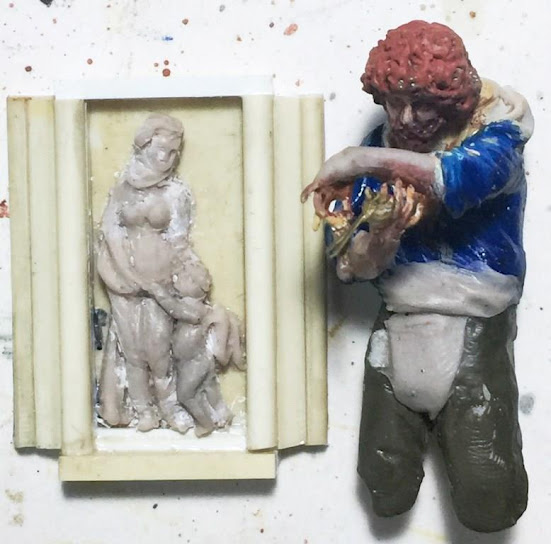Peter Paul Rubens’ figures are really substantial and full of energy. I like the theme of Samson and Delilah and it follows on from my Susanna and the Elders Old Testament piece. I read that other great contemporary artists of Rubens time didn't think much of this painting, referring to the dirty shadows. But many art critics nowadays grade this as one of his top masterpieces.
I also like doing figures set out of context particularly Renaissance paintings with wrong sumptuous costumes and settings for the wrong periods. Button counters and uniformologists really can't find fault here.
There are a total of 8 figures which is contained within a room and I can experiment more with forced perspectives. I'll also be adding lights to this piece. Again, a small shadow box footprint.
Here, I am using commercial pieces to quickly develop the forms. The foreground figures are sculpted to about 1/24 scale while the background figures are 1/32 and 1/35 scale. The musculature of Samson was carefully developed.
Most of the four main figures are completed. Now focusing on the furtive soldiers in the background. Notice the difference in size between the soldiers.

I've started to lay down oils on the main figures. Some changes were made to Samson's musculature. I resculpted the old lady and the barber. The details from the painting sometimes aren't obvious at first, necessitating these changes.
Also I've sculpted a background worship deity and am now finishing it to add to the wall.
Starting to work on the internal scene and walls.
I built up the interior scene with forced perspectives and staged the figures with the frame in place.
I also sculpted in drapery from the bed hangings. I painted the scene in brown and blue matt enamels.













































